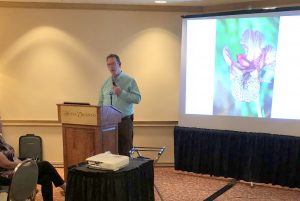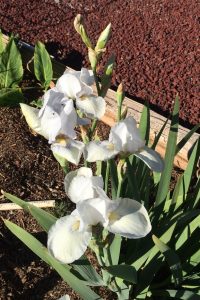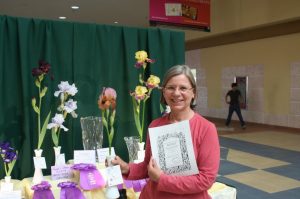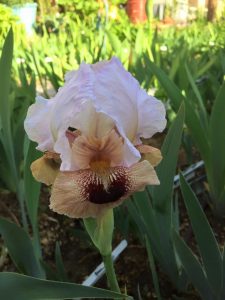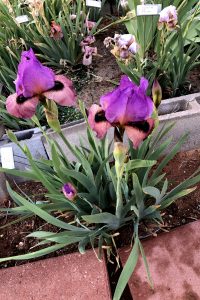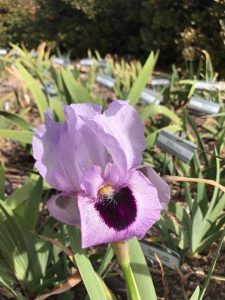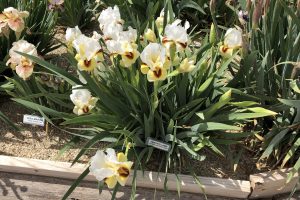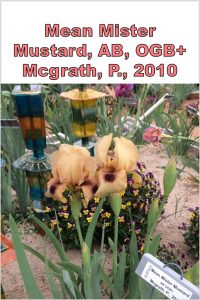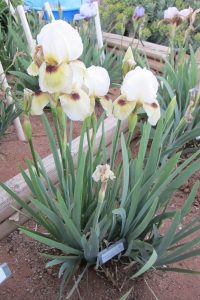Pete McGrath
Pete became interested in arils when he went to the Albuquerque Aril Society show in 1987. “I saw ‘OYEZ'(which had taken “Queen of Show”) and it felt like I had hit a brick wall at 60 miles per hour. Before that, my motto had been: “If you can’t eat it, why grow it”. The members were friendly and the late Susan Latimer provided me with my first arilbred, which was, of course, ‘Oyez’. Being in Albuquerque, Pete had access to many aril growers and Howard Shockey was his mentor for many years. However, they did not always see eye to eye. “He and Irene thought I was crazy trying to get veins onto OGB plants,” Pete said. James Whitely (The Aril Patch) and Carole Vossen were instrumental in getting Pete started. Pete’s major hybridizing goal is to get stippling and veining, combined with big signals, on oncocyclus formed flowers – all on easy to grow OGB plants. Pete is a Past Member of the Albuquerque Aril Society, as well as Past President of the Aril Society International. Pete is a frequent contributor of articles to the ASI Yearbooks, as well as a generous donor to the annual ASI plant sale.
Some of the species iris can be easy to kill. The Mid-East is the area where arils originated. The Mid-East climate is bone dry in the summer while the US desert southwest have a monsoon season in the summer. If Arils receive water when it is hot, they will rot. His other interests include Daylily hybridization, clematis and Japanese maples.
He had problems with Curved Bill Thrashes who kept pulling out the pure Arils he was going to introduce. They like to eat beetles and obtain extra moisture from roots. They did this for 2 weeks and eventually killed the Arils. So now the Curved Bill Thrashes die of lead poisoning in his yard.
He cautions about over-fertilization of Arils. You might get lush growth and lots of bloom but it will then rot. Pete stated that Colchicine, a poison and possible carcinogenic, was used on Arils in the past. This focused the iris to have cancer and those Arils that lived have lots more genes. It has been known to create fertile hybrids where before the hybrids were sterile. The effects are unpredictable and cause a lot of Arils to have bad form. Colchicine works by disrupting cell plate formation during cellular division, so that as a plant cell divides into two cells, it does not finish the division. This produces a single cell with a doubled nucleus having twice the chromosome number. The new plant is known as a polyploid and is often a common natural occurrence resulting from accidents in cell division. About half of all flowering plants have had origins in polyploidy.
Pete uses tomato bloom set or 2-4-D to set blooms on Oyez. He puts it in suspension with ethanol and make a weak solution with water and spray on the flower. This will help with setting in bloom. You can buy it in Texas but you need a license in NM. It may make blooms deformed for a few years. With wild iris, a given clone cannot self-propagate, but different clumps can pollinate. They start growing and it is safe to water when the night time temperature is in the 50’s. Heavy clay soil should not be watered in the summer for pure Arils.US

